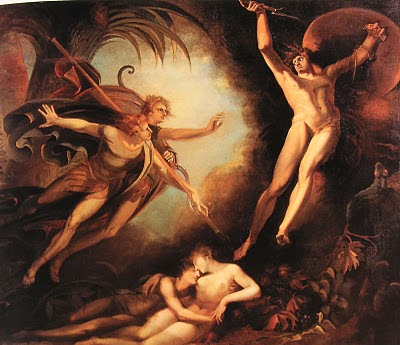
Well, I have returned from my outing to the West Coast. The first days were spent in Oakland at the German Studies Association conference. There were a number of panels on Goethe's lyric production, from which I profited enormously. Most of the folks attending these panels were fellow members of the Goethe Society of North America, and it was great fun to be among them again, too, and to hear some really good and even some really incomprehensible approaches to Goethe. The application of philosophical perspectives to Goethe -- Hegel, Stanley Cavell (!), even Spinoza -- generally leaves me cold (though Nietzsche is an important exception), but such views are what makes the field of Goethe studies vibrant.

And, then, there was the panel I was on, "The Pre-Kantian Sublime," with fellow panelists Bethany Wiggin and Kay Goodman. What I found especially beneficial about the panels I attended was the high quality of the "Comment" after the presentations. Our panel's commentator was Birgit Tautz. Again, really excellent, and I learned a lot. Kay Goodman's presentation, on Luise Gottsched, the wife of Johann Christoph (lovely portrait of her here), formed a really insightful contrast to my own presentation on Bodmer. Luise Gottsched and Bodmer represent two aspects of the reception of the sublime style in German letters.
The German Studies Association is not restricted to literary scholars. Indeed, the members are to a great extent from history. The president of GSA this year is Celia Applegate, a historian at the University of Rochester. I am looking forward to getting a copy of her book Bach in Berlin: Nation and Culture in Mendelssohn's Revival of the St. Matthew Passion. I had it in my hands for a few minutes at the conference's book exhibits and noticed that Goethe has a long entry in the index.
Professor Applegate gave the presidential address, entitled "The Importance of Culture." Abandoning any political correctness, she addressed the perilous state of the profession of German history and letters, in particular the effects of catering to students with "popular" subjects. It was a very good talk; she was very impassioned. The entire time, however, I kept thinking that she was at least ten years too late. The professoriate has got itself in this pickle, making the humanities irrelevant and, indeed, contemptible to many. I have always been surprised at the pusillanimity of the tenured. For decades they have witnessed the rise of mediocre scholarship and have kept their mouths shut. Well, like the federal government, spending the inheritance of future generations now, they have enjoyed their perks without caring about nurturing real scholarship and the future of the "liberal arts."
Let me not dwell on this topic, since there is nothing I can do, except pursue my own work.
After Oakland I traveled over to San Francisco, where I spent a few days with friends. It was the first time I enjoyed decent weather in SF. Indeed, it was so warm that there was practically no haze by early afternoon, not to mention fog.

The day after the conference I visited the de Young Museum in Golden Gate Park. From an architectural point of view, the de Young is really a lovely museum. Moreover, the first thing I encountered in their American section was the above painting on a sublime subject, a diptych of Niagara Falls from 1832 by the Moravian-American painter Gustav Grunewald (1805-1878). (Here is a link to Grunewald, with some biography as well as another Niagara image.) I particularly like the detail from Grunewald's painting at the top of this post, showing viewers above the Falls. Indeed the museum has quite a number of 19th-century American paintings with the sublime as their subject.

My own experience with the sublime, however, was my bike ride across the Golden Gate Bridge and then down (and down and down) to Sausalito. It was a gorgeous day, and, what was more, I discovered a kayak site at a small public beach in Sausalito. Afterward, there was the bike ride back up (and up and up) to the bridge. I peddle around Manhattan all the time, on a one-speed bike, and can even manage the hills in Central Park just fine. But the hills of San Francisco and environs are a different matter. I had to get off the bike a couple of times and push it up the hill. Much to my delight, when I got to the San Francisco side of the bridge, I discovered a bus that would take me to Golden Gate Park. I was able to attach my bike to the front of the bus. Hurray! All in all, a splendid experience.








